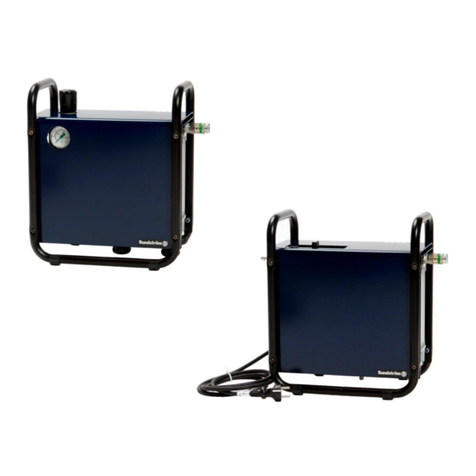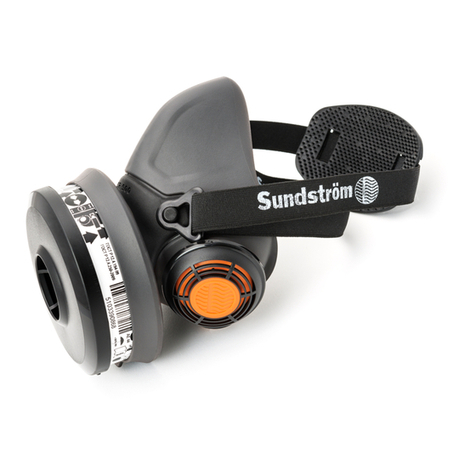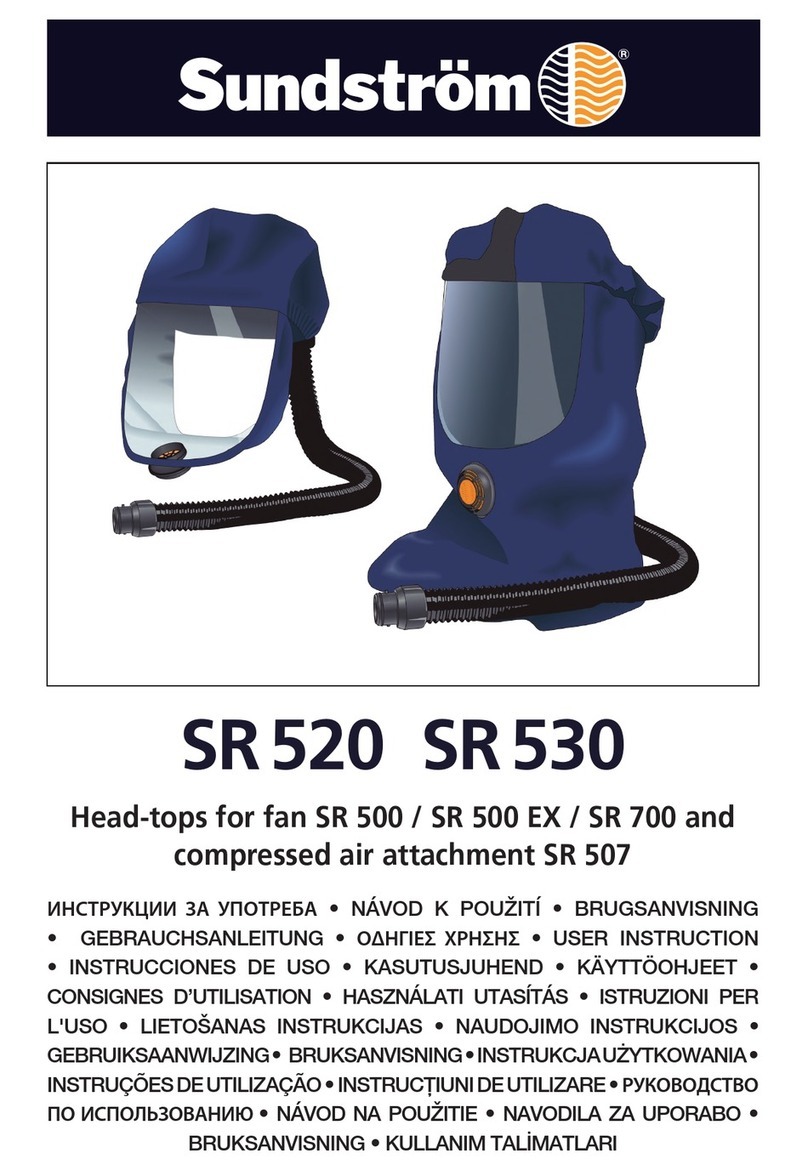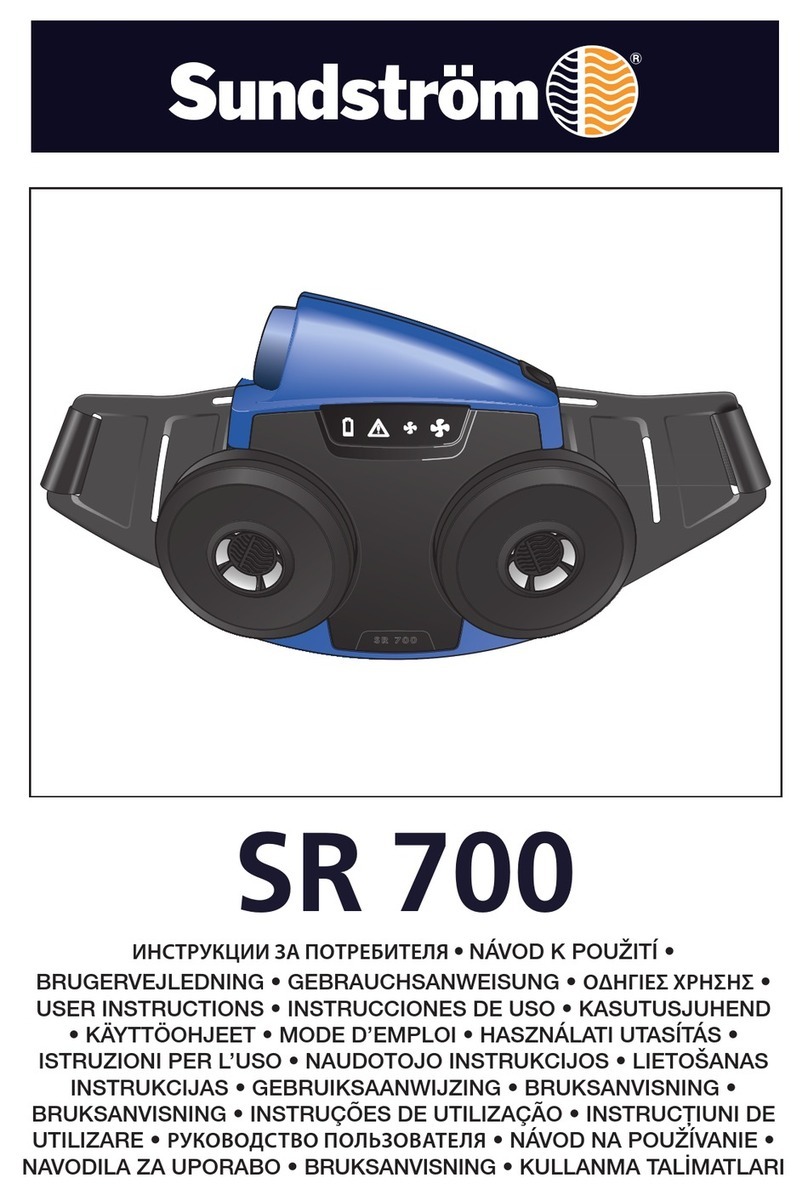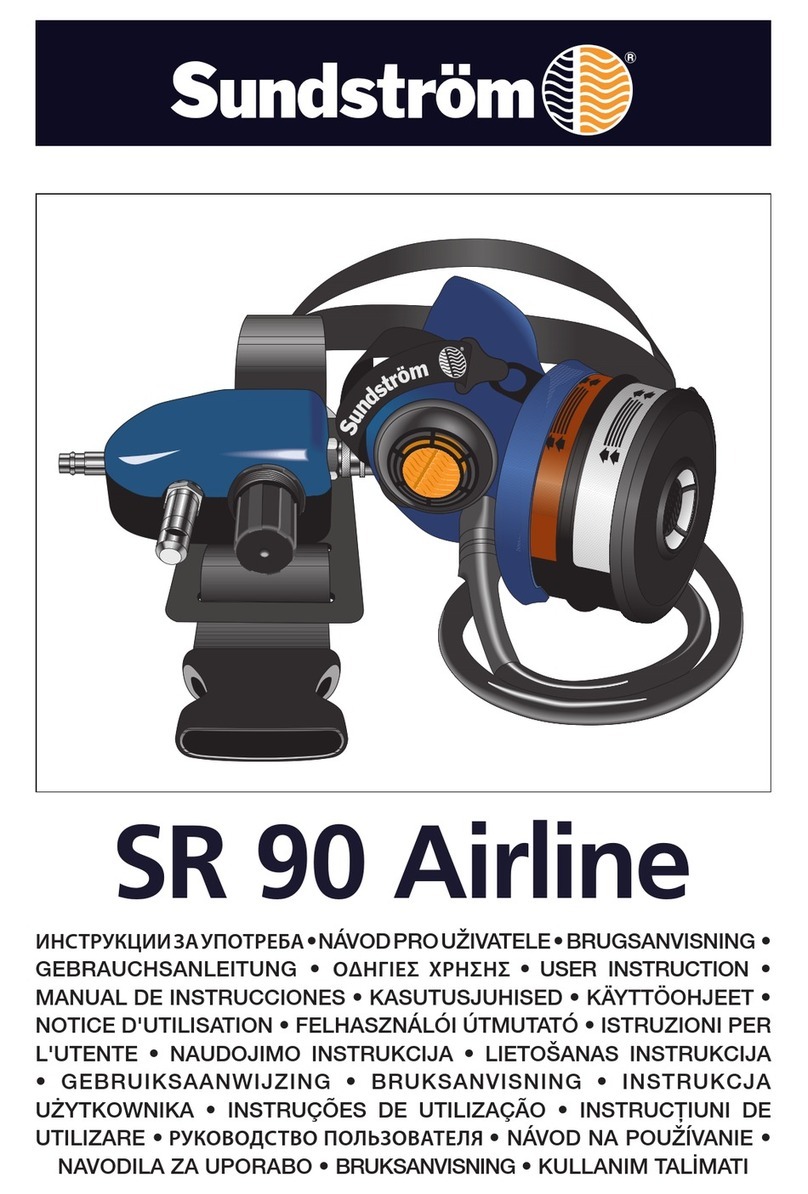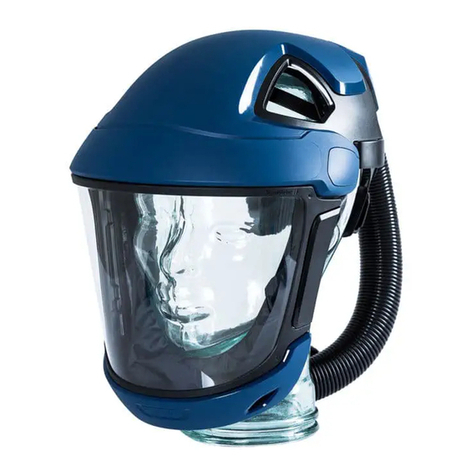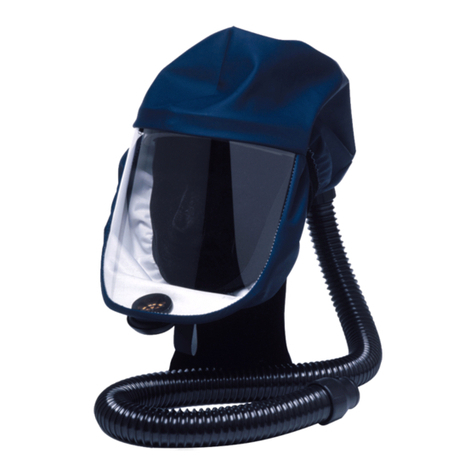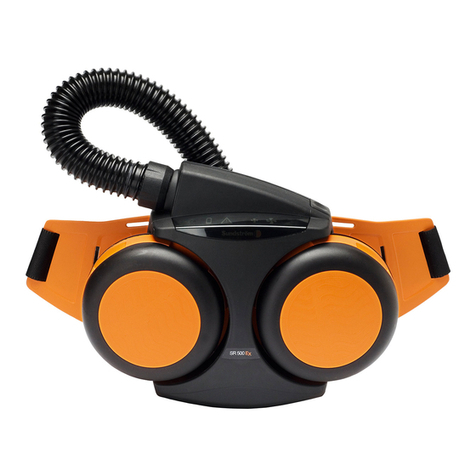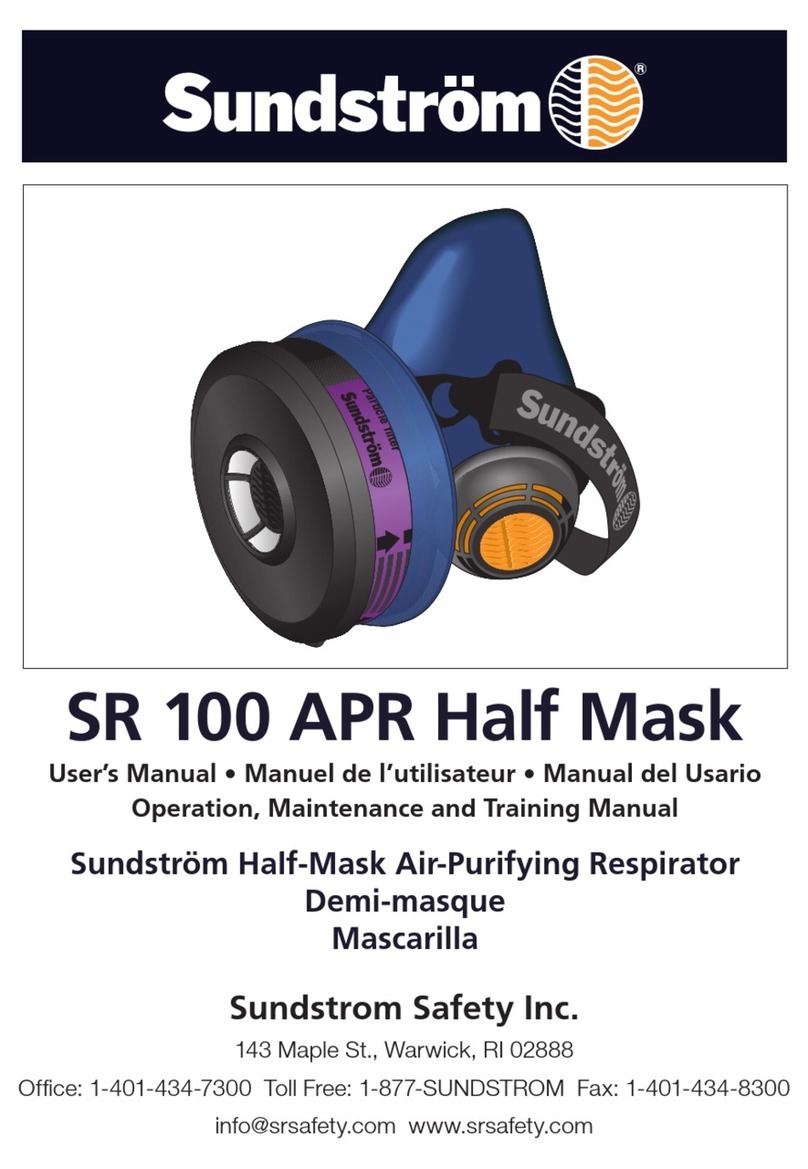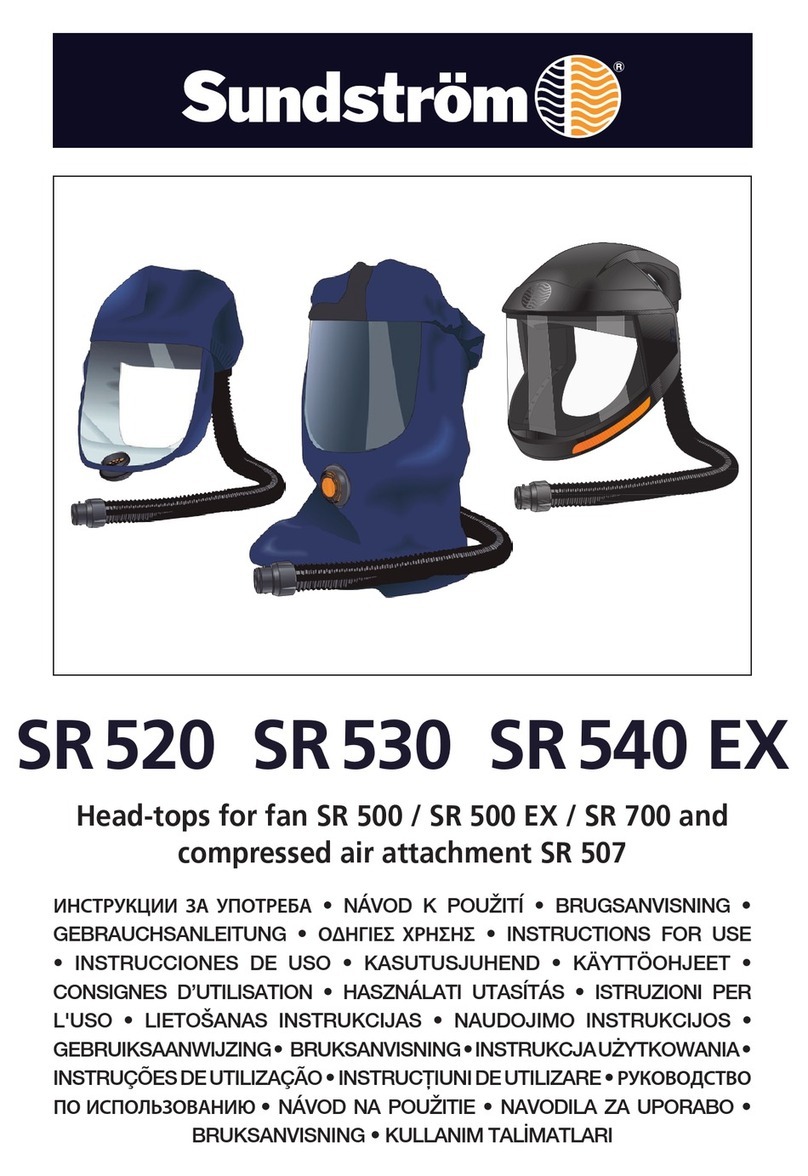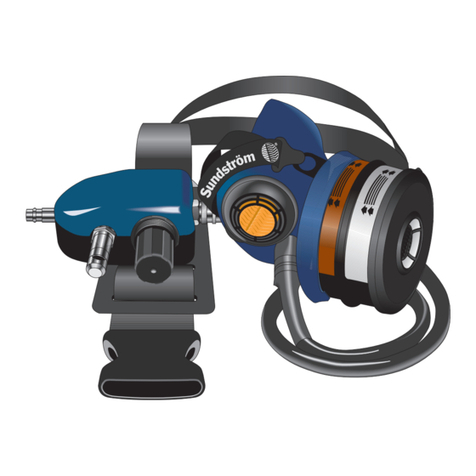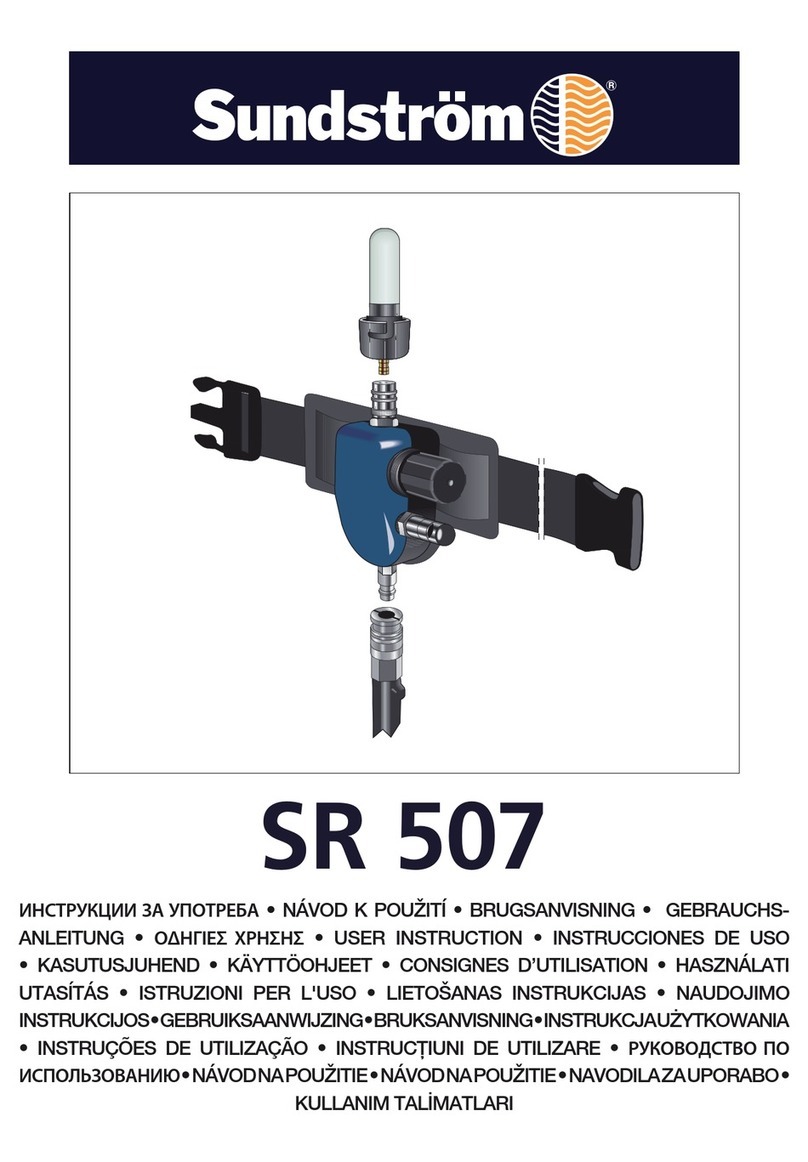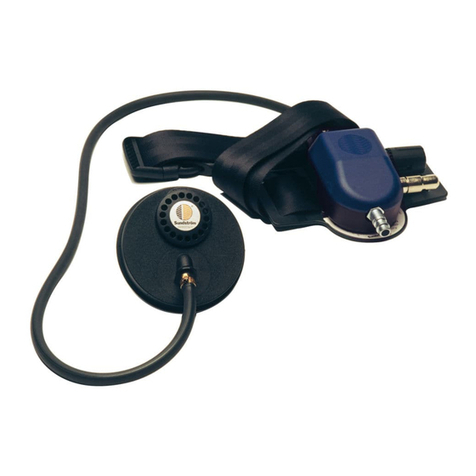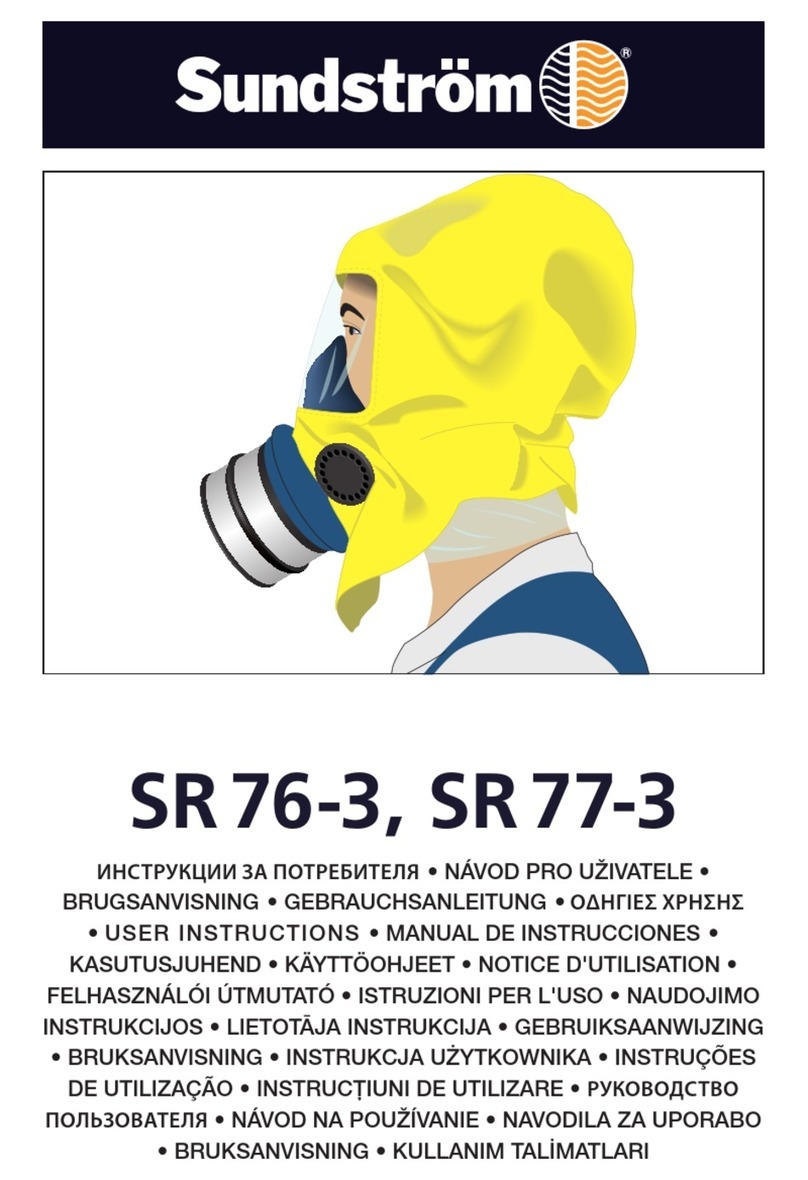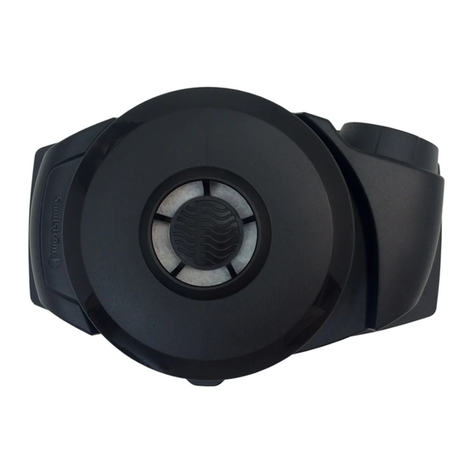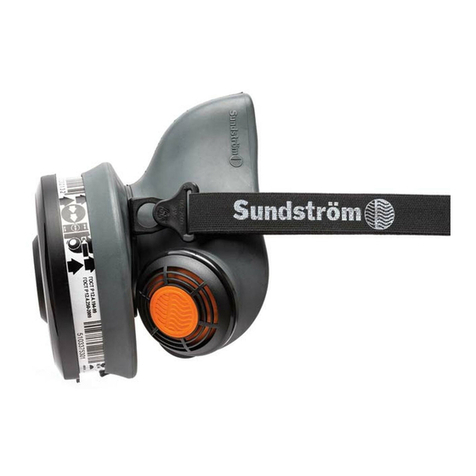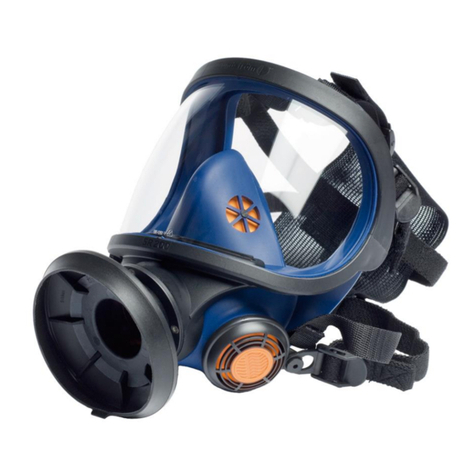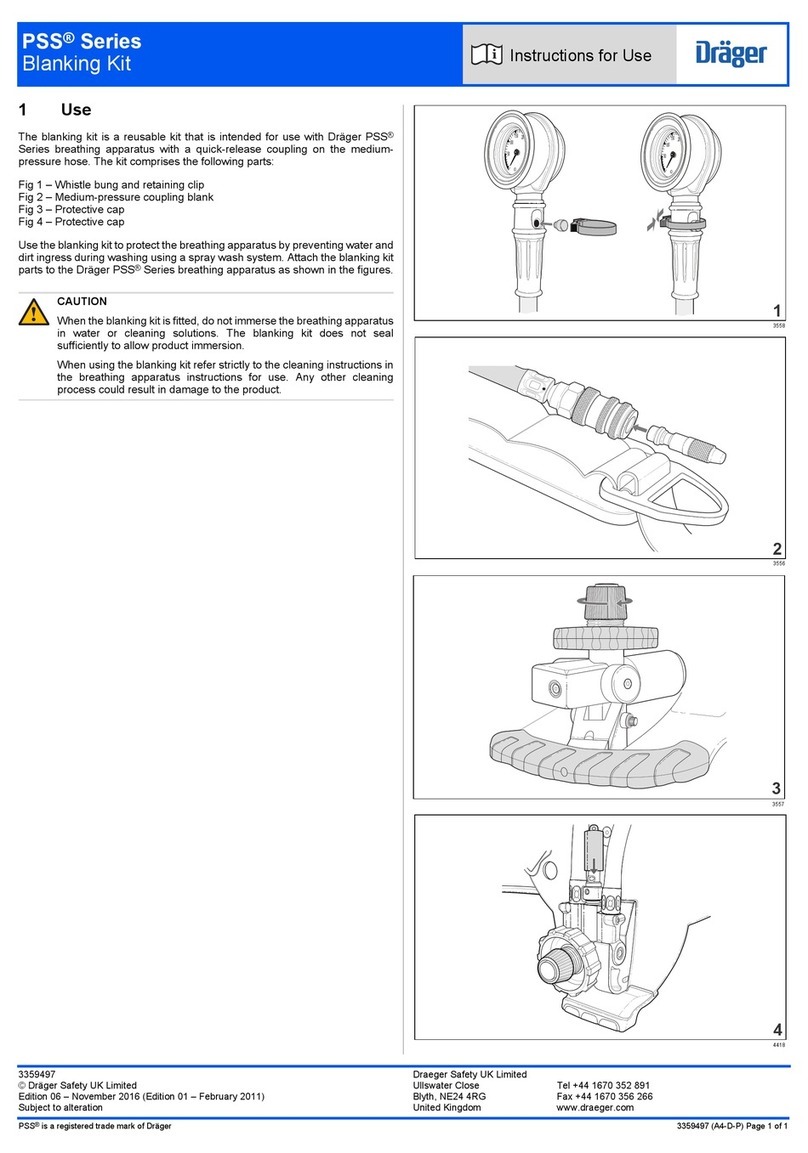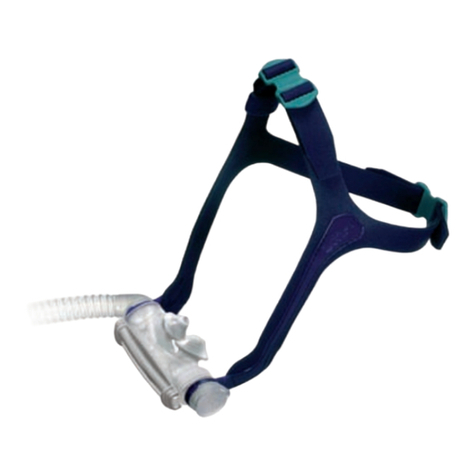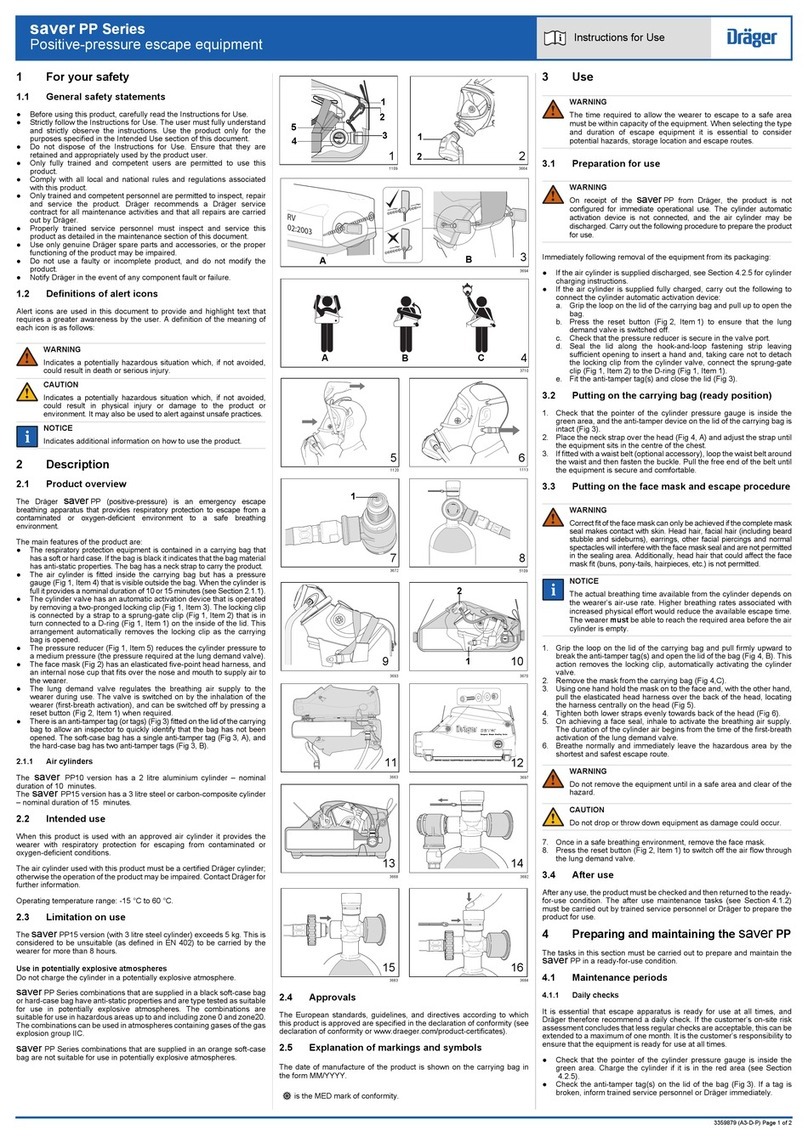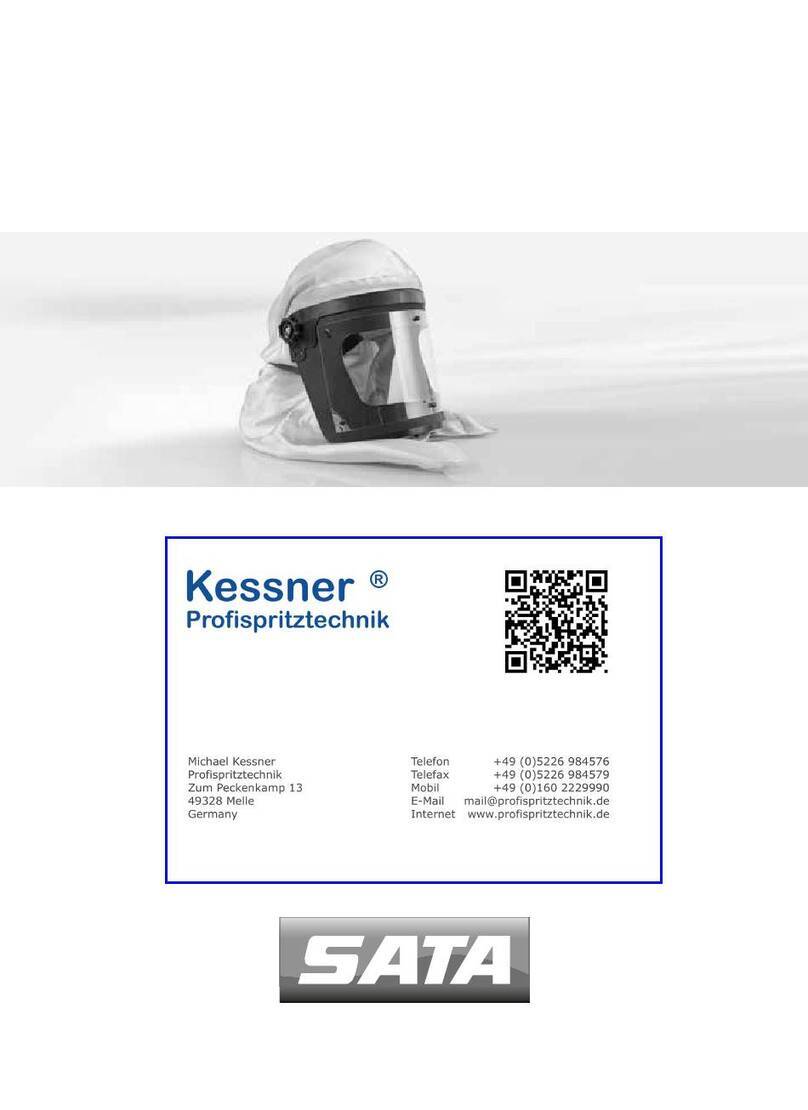
19
SR63 Compressed air hood EN
1. General information
2. Parts
3. Use
4. Maintenance
5. Technical specification
6. Key to symbol
7. Approval
1. General information
Use of a respirator must be part of a respiratory protection
program. For advice see EN 529:2005 or AS/NZS 1715:2009.
The guidance contained in these standards highlights important
aspects of a respiratory protective device program but does not
replace national or local regulations.
If you feel uncertain about the selection and care of the equipment,
consult your work supervisor or get in touch with the sales outlet.
You are also welcome to get in touch with the Technical Service
Department at Sundström Safety AB.
1.1 System description
The Sundström SR 63 compressed air hood is a respiratory
protective device which is supplied with a continuous flow of air
and is designed for connection to a compressed air supply in
accordance with European Standard EN 14594:2005 and AS/
NZS 1716:2012. The pressure in the hood prevents polluted
ambient air from entering the hood.
A compressed air supply tube intended for breathable air is con-
nected to a control valve which is secured to a belt. The control
valve is used for adjusting the air flow rate to the hood. A warning
whistle on the valve comes into operation if the air flow rate should
drop below the recommended value. From the control valve, the
air flows through a breathing hose to a connection at the rear of
the hood. From the connection, the air flows through a passage
to the front of the hood, where it is distributed over the surface
of the visor. The hood, which covers the head, neck and parts
of the shoulders, is secured to an adjustable head harness. The
replaceable visor is scratch-resistant. If protection against spatter
and splash is required, the visor can be protected by means of a
thin protective film available in sets of three. Excess air in the hood
is discharged through an exhalation valve at the front of the hood.
An adjustable elastic strap runs around the neck region of the hood.
1.2 Applications
The SR63 can be used as an alternative to filtering devices in
all situations in which the latter are recommended. This applies
especially if the user is doing hard or sustained work, and if
the pollutants have poor warning properties or are particularly
toxic. In addition, the SR 63 is used in environments in which
the concentration or type of pollutants is such that the use of a
filtering device is not permissible. The SR63 can also be used in
flammable atmospheres, since all parts are made from materials
which cannot give rise to frictional sparks.
1.3 Warnings/limitations
Note that there can be national differences in the regulations for
use of respiratory protective equipment.
As a general rule, the user must ensure that he will always be able
to retreat to a safe area without risk if the air supply should cease
or if he must remove the equipment for some other reason.
Warnings
The equipment must not be used:
• If the air flow test or fit test does not produce satisfactory results.
See 3.2.
• If the ambient air does not have normal oxygen content.
• If the pollutants are unknown.
• In environments that are Immediately Dangerous to Life and
Health (IDLH).
• With oxygen or oxygen-enriched air.
• If you find that breathing is difficult.
• If you can smell or taste the pollutants.
• If you feel dizzy or nauseous, or if you suffer any other type of
discomfort.
• If the warning whistle comes into operation, which indicates
that the air supply is lower than recommended.
Limitations
• A person working in an explosive or flammable environment
must follow any local regulations that may be in force for such
conditions.
• At very high work intensity, negative pressure may occur in
the equipment during the inhalation phase, which may cause
ambient air to be drawn in.
• Use of the equipment together with spiral tube SR 360 is
restricted to situations in which there is little risk of damage to
the tube and if the freedom of movement of the user can be
restricted.
• The air supply system should be equipped with an appropriately
rated and adjusted pressure relief safety valve.
• A risk assessment has to be done to avoid possible perilous
connections possible at the workplace, e.g. Nitrox.
• The equipment is approved only together with Sundström
compressed air supply tube that must be used if CE approval
and product responsibility are to apply.
• The SR63 is not approved for use with a mobile compressed
air system.
1.4 Breathable air
Breathable air shall meet at least the following purity requirements
according to EN12021:2014:
• The pollutants must be maintained at a minimum and must
never exceed the hygienic limit value.
• The content of mineral oil shall be so low that the air will have
no oil smell. The threshold of smell is around 0.3 mg/m³.
• The air shall have a sufficiently low dew point to ensure that no
internal freezing will take place in the equipment.
In the event of uncertainty as to whether the above demands have
been met, a filter such as the Sundström type SR99-1 compressed
air filter should be connected. Fig. 12. The SR99-1 compressed
air filter consists of a pre-collector and a main filter. The main filter
consists of a gas filter section - class A3 as per EN14387:2004
and AS/NZS1716:2012 - with about 500 g of activated carbon,
surrounded by two particle filters - class P3 as per EN143:2000
and AS/NZS1716:2012. The collecting capacity is 100 - 150 g of
oil. For further particulars of breathable air, see European Standard
EN 132:1998, Australian Standard AS/NZS1715:2009 and any
other national regulations that may be in force.
2. Parts
2.1 Delivery check
Check that the equipment is complete in accordance with the
packing list, and undamaged.
Packing list
• Hood with breathing hose
• Control valve
• Belt
• Flow meter
• Protective film
• User instructions
